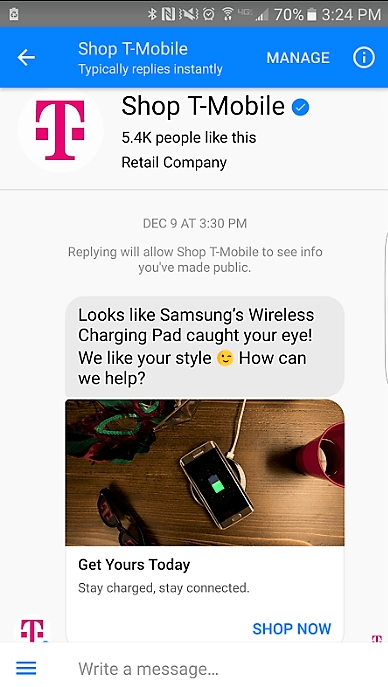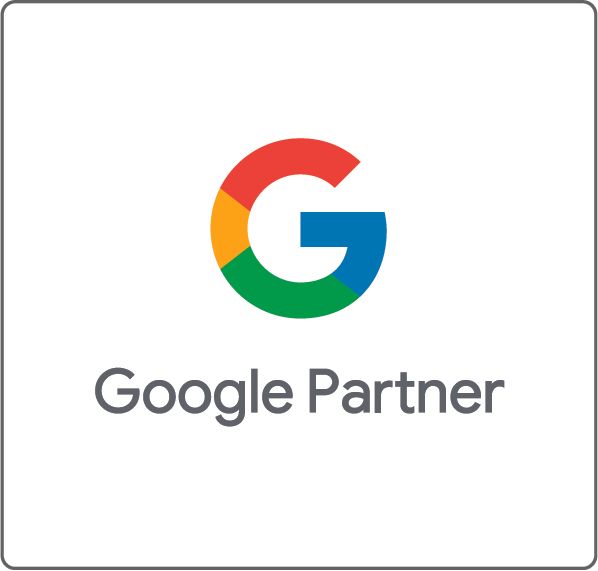The Chatbot Takeover!
Remember when people really thought that robots could eventually take over the world? Turns out those people weren’t completely crazy, however, they were wrong in some aspects. Robots aren’t taking over the world, they are actually trying to make our lives easier and help businesses talk to their customers. The prevalence of robots or automation in the world/workforce is becoming more obvious everyday. A recent phenomenon in the world of automation is the development of chatbots. Chatbots, in simple terms, are computer programs that are designed to simulate conversation with human users, specifically over the internet. These conversation usually deal with a variety of tasks like scheduling meetings, helping customers with problems and even helping them make purchases.
Most chatbots come in the form of online interfaces built into a company's website or app where customers can interact through basic text messaging. Texting is second nature to most people and it’s a great introduction to the potential of chatbots and how they can be a rewarding service or marketing opportunity.
A recent study done at DigitasLBi, a Global Marketing and Technology Agency, found that more than 1 in 3 Americans (37%) would be willing to make a purchase through a chatbot with the average price being around $56. That number increases to almost 50% when talking about millennials. However, this study also reveals that 73% of Americans would likely not use a company’s chatbot again after having a bad experience with it. In other words, you have to make sure a chatbot will benefit your customers experience.
Foreseeing immense potential, businesses are starting to invest heavily in the development of chatbots. Advancements in artificial intelligence (AI) allow businesses to use these bots in a few key areas that will impact their bottom line and create less expenses while increasing sales/leads. Oracle conducted a survey of 800 decision makers in businesses and concluded that 80% already use or plan to use chatbots by 2020. Complete automation is not feasible but there are areas in business where chatbots can produce considerable savings. An estimate of $23 billion can be saved from annual salaries. The two largest areas that can be improved by chatbots are sales/marketing and customer service. In terms of sales and marketing, the potential is significant. For now, chatbots that send out special offers and coupons can be beneficial to creating leads and eventually sales. The goal is to have chatbots that recommend items to customers based on their preferences or responses to a few prompts. AI technology hasn’t quite perfected that formula, however, companies like Amazon and Google are working on algorithms that hope to solve this issue.
From a customer service perspective, chatbots can answer basic Frequently Asked Questions (FAQs) that many customers ask, providing the answers upon request. If the chatbot is not able to help the customers, they can prompt to talk to a live person. While this doesn’t 100% replace human capital in customer service it can definitely reduce costs companies will incur while still being efficient and user friendly.
Although chatbots are far from perfect, there are still many practical and current uses for the AI technology. In order for retailers to benefit from the opportunities created by bots they need to convince consumers that commerce/support through a chat interface is as easy as texting a friend, but with more perks. The clearer the benefit to the consumer, the greater the results will be.
Foreseeing immense potential, businesses are starting to invest heavily in the development of chatbots. Advancements in artificial intelligence (AI) allow businesses to use these bots in a few key areas that will impact their bottom line and create less expenses while increasing sales/leads. Oracle conducted a survey of 800 decision makers in businesses and concluded that 80% already use or plan to use chatbots by 2020. Complete automation is not feasible but there are areas in business where chatbots can produce considerable savings. An estimate of $23 billion can be saved from annual salaries. The two largest areas that can be improved by chatbots are sales/marketing and customer service. In terms of sales and marketing, the potential is significant. For now, chatbots that send out special offers and coupons can be beneficial to creating leads and eventually sales. The goal is to have chatbots that recommend items to customers based on their preferences or responses to a few prompts. AI technology hasn’t quite perfected that formula, however, companies like Amazon and Google are working on algorithms that hope to solve this issue. From a customer service perspective, chatbots can answer basic Frequently Asked Questions (FAQs) that many customers ask, providing the answers upon request. If the chatbot is not able to help the customers, they can prompt to talk to a live person. While this doesn’t 100% replace human capital in customer service it can definitely reduce costs companies will incur while still being efficient and user friendly.
Although chatbots are far from perfect, there are still many practical and current uses for the AI technology. In order for retailers to benefit from the opportunities created by bots they need to convince consumers that commerce/support through a chat interface is as easy as texting a friend, but with more perks. The clearer the benefit to the consumer, the greater the results will be.
Never miss an update from “The Shoppe,” sign up for our email list today!
Subscribe
Sign up with your email address to receive news and updates.
Subscribe
We will get back to you as soon as possible.
Please try again later.
We respect your privacy.



Address
4 Corporate Drive,
Clifton Park, NY 12065
Shopper and Marketing Insights to Your Inbox!
Sign up with your email address to receive updates and insights from the SparkShoppe team!
Newsletter footer
We will get back to you as soon as possible.
Please try again later.
We support your right to privacy and therefore will not disclose your personal data to other organizations, third party vendors, suppliers or marketers.
© 2024 All Rights Reserved | Privacy Policy | Accessibility Statement














